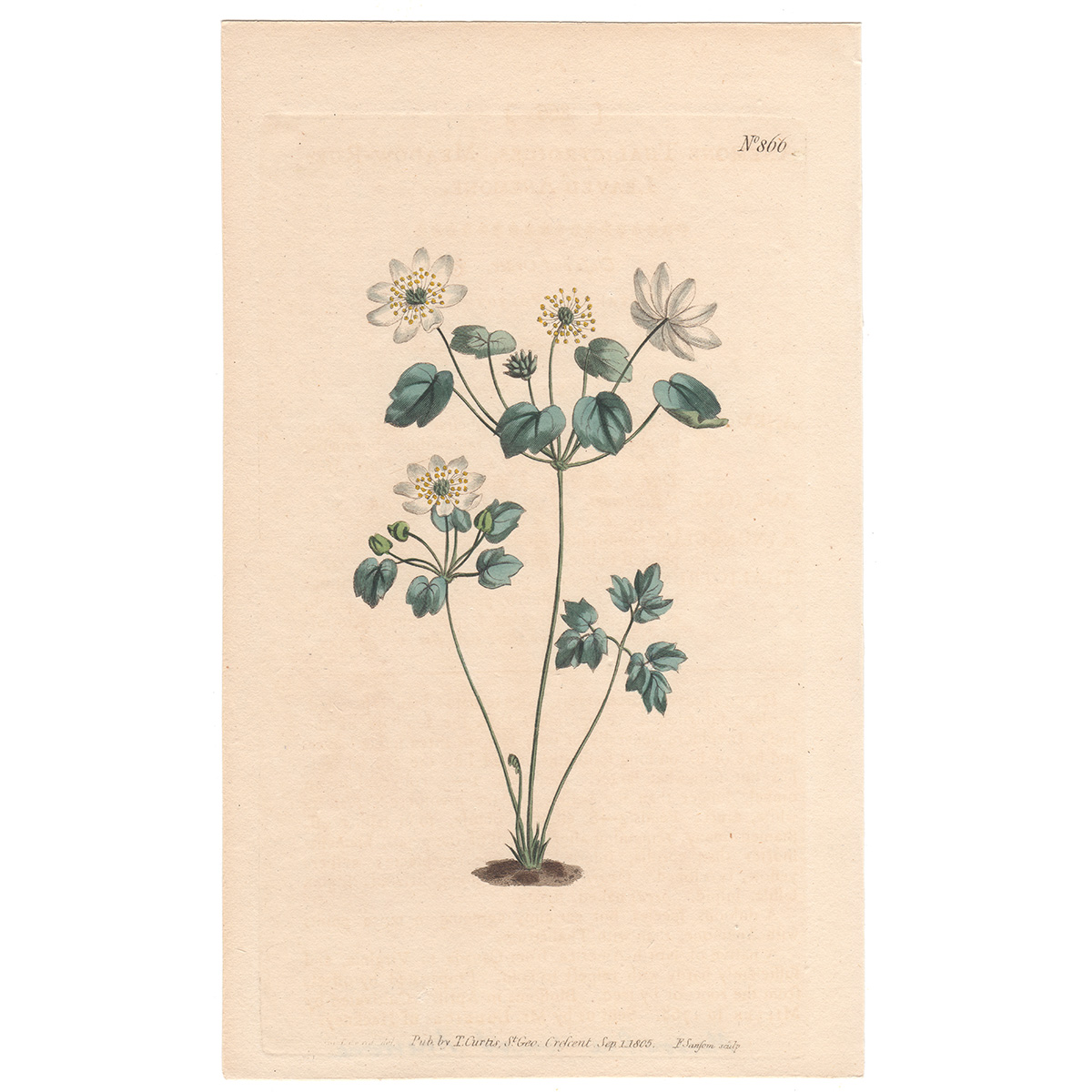Antique Original Hand-colored outlet Copper-Plate Engraving, "Round-Leaved Bloodflower," by
--Antique Hand-colored Copper-Plate Engraving, "Round-leaved Bloodflower," early 19th century
--Engraving by Sydenham Edwards
--Hand-colored by William Graves
--Original illustration from Curtis's Botanical Magazine, published as plate 1618, 1st February 1814. Watercolor and pencil on paper. The specimen depicted here flowered in August 1813 in Mr. Griffin's conservatory at South Lambeth. This species was introduced from the Cape of Good Hope by Griffin.
--COA attached on verso as well as an original excerpt of Curtis' Botanical Magazine which describes the specimen and calls out the plate #.
--Color-coordinated frame is in good condition and measures approx. 13-3/4" W x 16-3/4" H x 1" D
--Elegantly matted under glass. Mat and engraving in excellent condition.
--Image measures approx. 5" W x 8" H
--Backing paper in good condition. COA permanently affixed to verso. Botanical description (excerpt) is protected by plastic and taped to the verso. We have not removed or replaced any of the elements of the verso in order to preserve the original presentation and document
--Wired for hanging
About the subject: (borrowed outlet from Wikipedia, the repository of all knowledge in the universe!)
"Haemanthus is a Southern African genus of flowering plants in the family Amaryllidaceae, subfamily Amaryllidoideae.[1] Members of the genus are known as blood lily and paintbrush lily. There are some 22 known species, native to South Africa, Botswana, Namibia, Lesotho and Swaziland. For more information about the various species of Haemanthus, see the Wikipedia entry at: https://en.wikipedia.org/wiki/Haemanthus
About Curtis' Botanical Magazine, a fascinating narrative can be found at: https://en.wikipedia.org/wiki/Curtis's_Botanical_Magazine
A brief description of the Magazine is contained on the website of the Royal Botanic Gardens, Kew, kew.org. The gardens are located in Richmond, UK. In addition, there is a fascinating biography of Curtis and a description of the magazine published by the University of Wellington, New Zealand at: http://nzetc.victoria.ac.nz/tm/scholarly/tei-SamEarl-t1-body1-d5.html
About the engraver, Sydenham Edwards. Edwards was a Welsh artist and illustrator working in watercolor and other media in the late 18th and early 19th century. He was a close companion of William Curtis and accompanied him on myriad trips to collect and observe specimens
Borrowed from the Dictionary of Welsh Biography:
"From 1798 to 1814, Edwards contributed nearly all the drawings for The Botanical Magazine and several for Flora Londinensis.
"He issued six parts of Cynographia Britannica, 1800-5, consisting of coloured engravings of the various breeds of dogs in Great Britain, and also supplied the plates for The New Botanic Garden, 1805-7, which was reissued in 1812 as The New Flora Britannica. In 1814 he withdrew from The Botanical Magazine and started The Botanical Register. He exhibited twelve pictures at the Royal Academy between 1792 and 1814.
"Water-colour drawings by Edwards and engravings after him, mainly of birds, animals, and botanical subjects, are to be found in private hands in Wales and in such public collections as those in the National Museum of Wales, the National Library of Wales, the British Museum, and the South Kensington Museum.
"Edwards died 8 February 1819 and was buried at Chelsea Old Church."
About the colorist. William Graves was a Quaker, like William Curtis, and had a longstanding relationship with him. He was employed by Curtis to hand color several thousand copies of each issue of the Magazine based on Edwards' original paintings.
============================================
007





